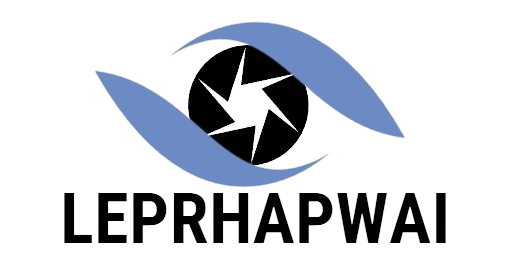In the world of childhood education, reforms are on the rise to create the best learning experience for young minds. Investing in early childhood education is an essential way to lay a strong foundation for children to grow and learn in the long run. Having a quality early education sets the crucial groundwork for success throughout the rest of a child’s life, making it imperative to develop the best possible educational environment. Read on to find out more about the early childhood education reforms being implemented to ensure that all children have the opportunity to excel.
1. Nurturing the Best Possible Start with Early Education
Early childhood education is so important because it is the foundation for a child’s future development. What children learn and experience during this period of time has a lasting impact on virtually every aspect of their lives.
- Awareness – Children need an environment that stimulates their senses with different colors, sounds, and textures, making them more aware of the world around them.
- Confidence – Building self-confidence during the early years is key to establishing an individual’s sense of self-worth.
- Curiosity – Encouraging questions and exploration expands knowledge later in life.
- Compassion – Teaching and demonstrating empathy enable children to understand the needs of others and develop their social skills.
Early education is essential because it nurtures a child’s social, emotional, physical, and mental growth. Not only does it provide educational basics such as learning shapes and colors, but it also offers hands-on exploration of the world in ways that later formal schooling cannot match. Early education lays the groundwork for children to become creative, independent, and confident individuals. It helps to develop fine motor skills, improves problem solving abilities, and reinforces a strong connection to their environment. That way, when a child eventually steps into kindergarten, they will have a head start, ready to take on the challenge of a structured school experience.
2. Taking Early Childhood Learning Seriously
Early childhood learning can open the doors to so many new opportunities for children. With the right tools and resources, they can take full advantage of the experiences around them and give them the best start in life. Here are a few tips to make sure your child gets the most out of early learning experiences:
- Provide a supportive environment. Encourage your child to engage in activities that will help develop their knowledge, understanding, and self-expression. Offer a wide variety of activities that can nurture their curious minds and allow them to explore around them.
- Adapt the learning to their individual needs. Every child is different and absorbs knowledge differently. Modify the curriculum to cater to their individual skills and interests and provide activities that they can engage in and get the most from.
- Be patient and consistent. It takes time for children to learn and understand. Patience and consistency are key in this process; develop routines, practices and motivate them to play and explore in a fun and safe environment.
Incorporating fun activities into learning can be beneficial: activities such as singing, drawing, playing with clay or having conversations with each other can all help support children’s development. It is also beneficial to have adults interact with them, answer their questions, and be supportive of new ideas and creativity. With the right guidance and resources, children can embark on amazing learning journeys to become great citizens of the future.
3. Examining the Benefits of Early Education Investment
Early education is an investment that can offer a range of benefits for the future. It provides a foundation for future academic success as well as a variety of additional benefits for the development of children. This includes personal, social and emotional development, as well as providing them with the necessary skills for the future.
Some of the core benefits of early education investment include:
- A Strong Foundation for Academic Success: Investing in early childhood education helps develop a strong foundation and the necessary skills needed for educational success in the future.
- Improves Physical and Mental Health: Early education helps to develop language, math, and literacy skills – which are important in promoting physical and emotional health.
- Employability Skills: Through early learning, children gain the necessary skills to become employable. They learn valued skills such as communication, critical thinking, and problem solving that are required in the workplace.
- Stronger Social Connections: Early childhood education helps children form better relationships with peers and adults, while also providing valuable social experiences.
Investment in early childhood education can produce long-term positive impacts on the future of society. Investing in early education leads to a more developed and socially conscious future generation.
4. Making a Difference with Purposeful Reforms
Purposeful reform has the power to open opportunities for those in need, helping make positive changes that can improve the quality of life for everyone. Effective policy reforms should also maximize economic and social benefits for underprivileged communities while improving equality. Here are some practical methods to create meaningful reform:
- Collect Right Data – Gather necessary evidence to understand the underlying problems and identify solutions in an effective way.
- Engage with Communities – Work with local governments and representatives to build consensus and increase community office-holding and participation in decision-making processes.
- Include Automation Component – Incorporate technological component such as online services, cognitive chatbots, etc. to enable smoother functioning.
These steps can be taken alongside other crucial factors such as budget allocation, resource sharing and effective communication strategies with stakeholders to ensure equitable and adaptive reform. By addressing issues in innovative ways and addressing local perspectives, existing systems can be amended to create more inclusive outcomes.
5. Gathering the Data: What Do We Know So Far?
Step 1: Accessing the Sources
Drawing on available data is an important first step in any data gathering process, and this situation is no different. From online sources like press reports and journals to physical sites, a comprehensive pool of data is key for a successful analysis. Depending on the origin, preparation can often be a time-consuming activity that requires researching each source.
Step 2: Assessing the Quality
Once the sources have been located and accessed, it’s important to assess the quality of the data. This can be done by asking a series of questions including:
- Is the data accurate and up-to-date?
- Does it provide meaningful insights?
- Is the source reliable?
Answers to these questions can help to identify the best data to use for the study. Quality data is crucial in order for the analysis to be successful, so it’s essential that the data remains intact and is not lost or corrupted as the result of a data processing issue.
6. Developing a Shared Vision for the Future
A shared vision for the future goes beyond simple hopes and aspirations. It is a meaningful plan of action that can help move an organization towards its intended goals. When formed thoughtfully and with an eye for detail, it can provide direction, ignite a sense of purpose, and make sure that everyone is working towards a common goal.
To develop a shared vision, it is important to consider factors such as organizational values, goals, and capabilities. A discussion should be held that engages everyone in the organization to contribute to the development of a unified vision. Emphasis should be placed on:
- Identifying common values: Defining the values that the team will adhere to together.
- Creating a larger purpose: Identifying a purpose that will unite everyone and inform their decisions, while helping to provide a greater sense of purpose.
- Envisioning goals: Initiating conversations about desired outcomes that are both ambitious and achievable.
Once these objectives are established, it becomes easier to develop a shared vision for the future and the necessary steps to achieve it.
7. Unlocking the Potential of Every Child Through Education
Providing the highest quality of education to every student is key to unlocking their potential. The future of our society hinges on the ability to impart knowledge and help children develop into keen and inquisitive minds who can contribute to the world with their unique talents. To that end, it is essential to ensure everybody has equitable access to education resources and experiences.
In the classroom, educator-facilitated learning encourages children to develop their individual capabilities, as all students learn at their own pace. By encompassing an array of activities that stimulates creative exploration and learning, each student can prosper in their areas of interest. Furthermore, extracurricular activities such as clubs, sports teams, and visual-arts programs can be even more tailored as outlets for growth and development.
- 1. Provide equal access to resources.
- 2. Facilitate educator-led learning.
- 3. Stimulate creative exploration.
- 4. Offer tailored extracurricular activities.
The goal of education is to bring out the best in every child, so that their potential can be unleashed and their future can be bright. To achieve this, we must create an environment that identyfies and nourishes each student’s educational strengths, interests, and needs.
Investing in our youngest learners’ education is one of the most important investments we can make. Early Childhood Education reforms offer an opportunity to create meaningful learning environments for children and the communities they live in. Now is the time to seize this opportunity and provide our children with the education and resources they need to build a brighter future.











